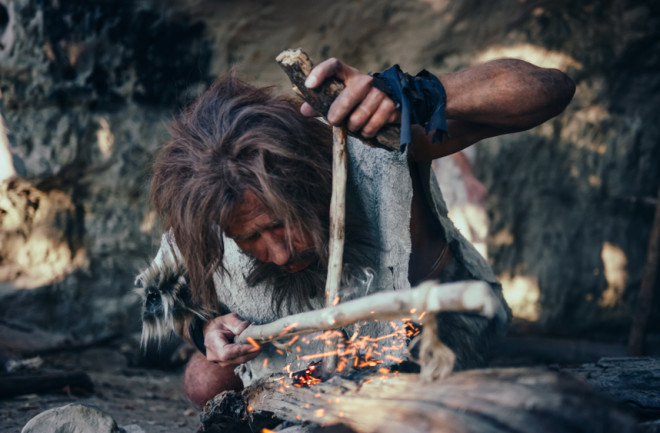Anyone who has ever tried to start a campfire knows it’s not that easy — even with matches. A person has to get the right kindling and tinder, place the match in a suitable spot, and nurture the flame so it spreads. It’s no wonder different scouting groups award merit badges to campers who successfully foster the flames.
It took a long time for ancient humans to master fire-making and adapt it to daily life. But once fire became a consistent tool, it changed many aspects of early human civilization.
How Humans Found Fire
Cartoons always depict cavemen having an epiphany in which they discover the wheel or start a fire for the first time. But there wasn’t just one moment when a caveman picked up a hunk of pyrite, struck it against a rock, and marveled at the resulting sparks. Instead, hominins lived with natural fire long before they were able to replicate and control it.
“At that period, they started to conceptualize fire and understand that stuff tastes better when it’s not raw,” says Francesco Berna, a professor of archaeology at Simon Fraser University in Burnaby, British Columbia, who studies the archeology of fire.

